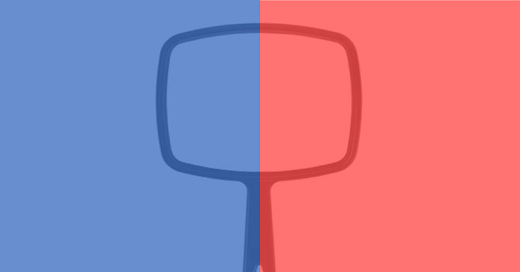How Liberal and Conservative Customers See Themselves (With Your Products)
Connecting to market narcissism and ego
How do customers see themselves, and what do they want others to believe? Brands and products can reinforce a customer’s self-image or work in a contrary manner, depending on the customer’s worldview as liberal or conservative. How your business appeals to customer self-image can trigger immediate interest or make your products fade into the background. It has nothing to do with politics - it reflects worldview, how two groups of customers see the world, and what they believe to be true.
The Idea
Customer self-image involves diving into market narcissism and ego - the customer’s self-interest, self-admiration, and sense of self-importance. Both conservative and liberal customers have the potential for narcissism and egoism but exhibit these attributes differently.
For conservative customers, self-image and narcissism are tied more to heightened self-perception of superiority and the desire for others to “step up” to what they think represents their abilities. Tied to that is the desire for others to respect them and recognize what they have achieved. Achievement is all relative, so the specific achievement doesn’t matter.
For liberal customers, narcissism is linked more to a desire for others to recognize and admire their appearance - attractiveness and distinctiveness. But appearance and distinction are not hierarchical or positional as with conservative customers - it’s more about being different or setting oneself apart. This distinct yet “off to the side” aspect of liberal customer self-image reflects a more egalitarian group culture attribute, as explored in detail in our Base Customer Model.
Think of self-image being tied to either self-perceived accomplishments for conservative customers versus self-perceived attractiveness or uniqueness for liberal customers. Both groups desire those around them to recognize these traits and are disappointed when that recognition doesn’t happen. Like other attributes discussed in this newsletter and the forthcoming book, these perceptions of self-image operate in varying degrees. They are not absolute but form connective tissue within the two markets.
The Evidence
In the late 1970s, two psychologists, Robert Raskin and Calvin Hall developed a method for measuring narcissism to diagnose patients. The technique is called the Narcissistic Personality Inventory, which employs forty pairs of questions that seek to identify seven different dimensions of narcissism: authority-seeking, entitlement, exhibitionism, exploitativeness, self-sufficiency, superiority, and vanity.
Political scientist Peter Hatemi and business professor Zoltan Fazekas used the Narcissistic Personality Inventory to identify narcissism among conservatives and liberals. They commented, “Overall, we find those on the left and right are equally narcissistic. However, liberals and conservatives differ in which dimensions drive their narcissism. Specifically, we find that the entitlement facet of narcissism is uniformly related to more conservative positions, whereas exhibitionism is related to more liberal values.”
In this study, conservatives were more likely to agree with statements like “I insist upon getting the respect that is due me” and “I expect a great deal from other people.” Liberals, on the other hand, agreed more with statements like “I get upset when people don’t notice how I look when I go out in public” and “I will usually show off if I get the chance.”
In a PsyPost interview, Hatemi commented, “The simple takeaway is that activation of one’s sense of entitlement appears to be related to individuals moving to the right, while activation of one’s need to display their values is related to left-leaning political positions. The bigger message is that narcissism is part of all people’s normal persona.”
Application
Market self-image is a fascinating attribute for a wide range of products. You’re exploring how your customers see themself with your products and if you are activating interest based on liberal or conservative desires for recognition.
Apparel is the most straightforward example. Fashion as exhibitionism, focusing on uniqueness and display, will lean toward more liberal customers. Fashion as a signal of accomplishment will skew toward conservative customers.
Fitness is another example. According to YouGov, conservative and liberal customers exercise about the same amount, which is one reason the category is so big. Yet fitness products will have different appeals to conservative and liberal customers through inherent qualities of the product itself or its positioning or brand in the marketplace. For example, a simple hand barbell can relate to one of two outcomes: positional strength and power or physical distinction and attractiveness.
Even if your product has no outward visual effect on your customer, you can tap into these differences in self-image. For example, professional service firms - legal, accounting, marketing, and financial - can reinforce a market’s desire for self-image. A financial service firm can project an image that effectively congratulates conservative customers or recognizes the uniqueness of liberal customers. Flattery with both groups will get you everywhere, so to speak - it just has to be the right kind of flattery.
One of the most significant opportunities for self-image alignment will be with your brand, which can amplify the desires of one or the other group. The same argument can be made with product design, whether it supports hierarchy and level achievement or is more unique and distinct. For brand development and product design, these self-image attributes can be applied to just about any business.
What’s important for your business is to pause and think about how your customers see themselves with your products and what effect that has on their self-image. It’s always tempting to invoke your own self-image on the market as if you are the customer, as I have done many times in the past, which may or may not align with your customers. All it takes is a small dose of self-awareness to put yourself into the customer’s shoes, which may signal a conservative or liberal self-image if you happen to glance down at them.




